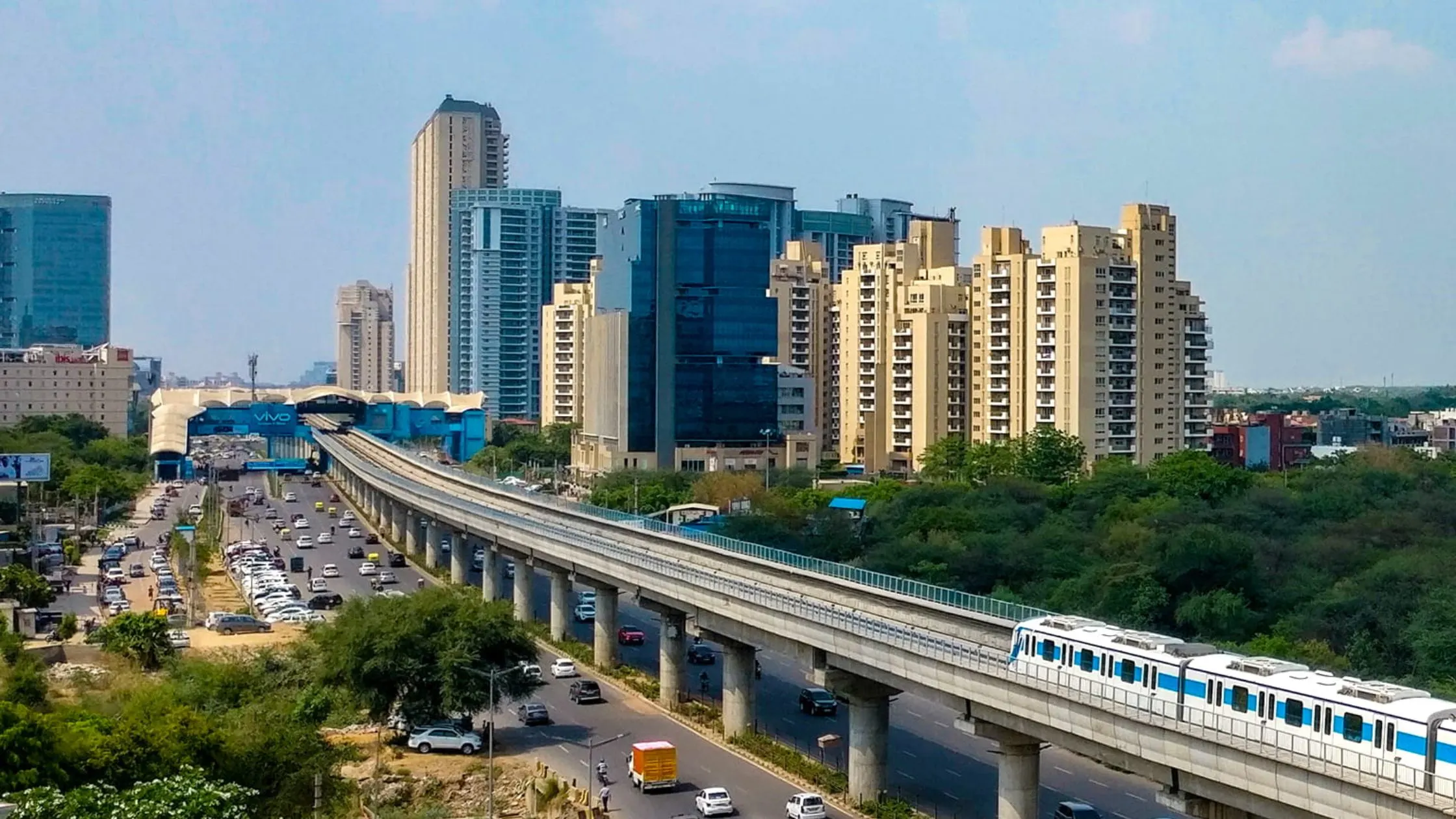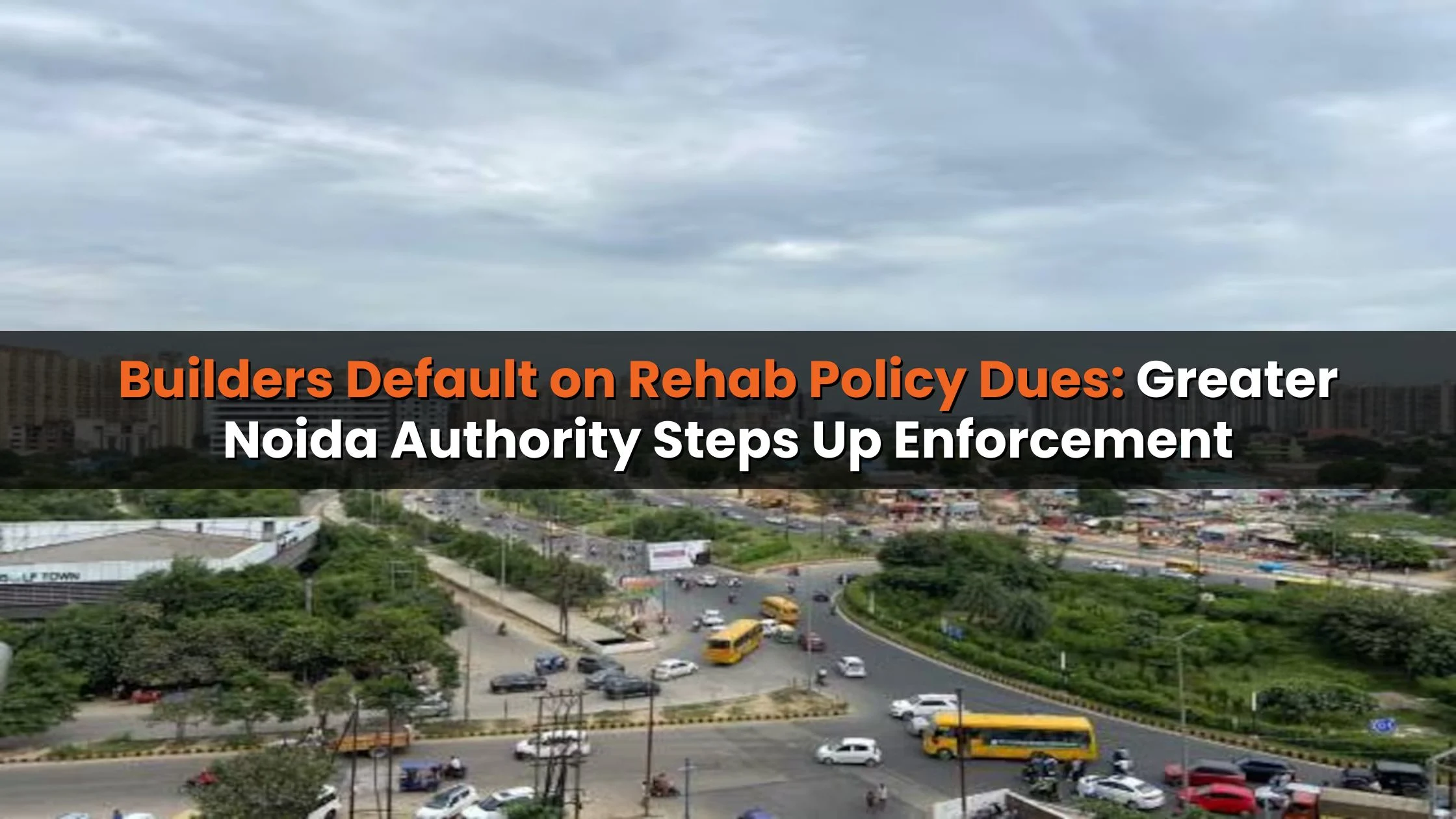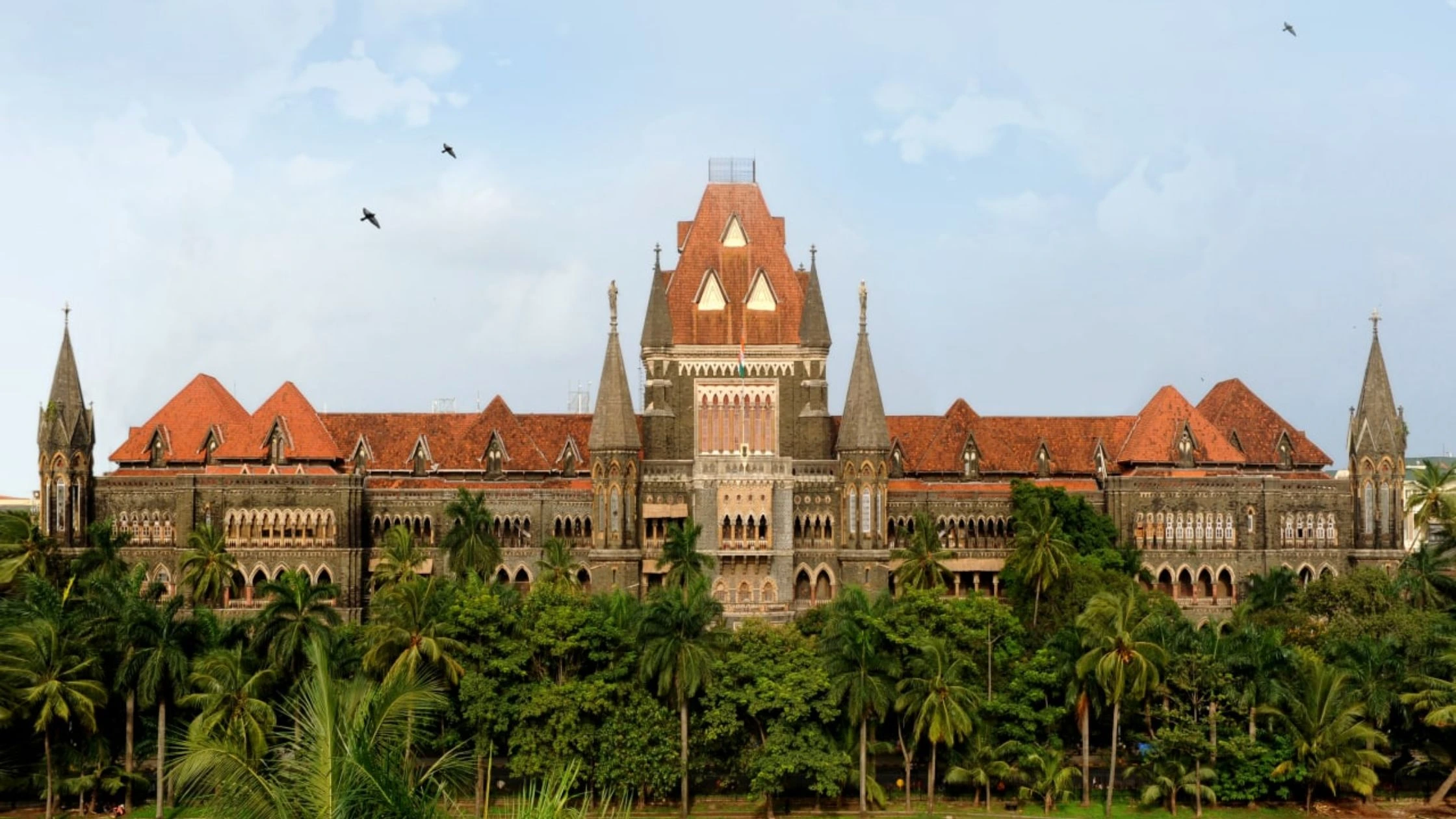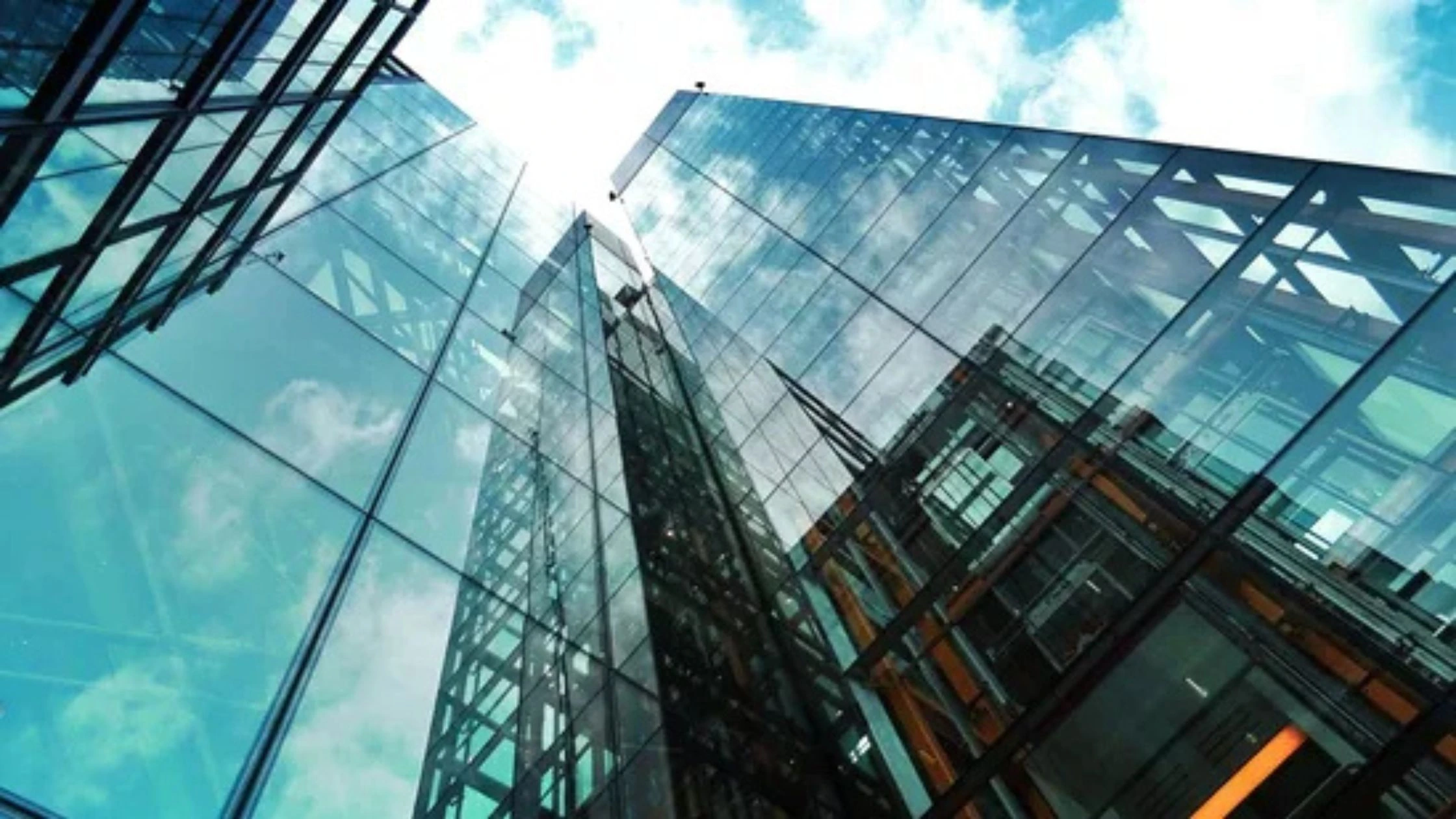Table of Content
The Delhi-NCR real estate market continues to outperform other metros, recording the highest housing price growth of 24% year-on-year during the July–September 2025 quarter. According to a recent report by property consultancy Anarock, this remarkable surge has pushed the average residential property rate in NCR to ₹8,900 per sq ft, up from ₹7,200 per sq ft in the same period last year.
The steady Delhi NCR housing price growth comes despite moderating national trends, reflecting the region’s sustained buyer interest, premium housing launches, and strong infrastructure pipeline.
Delhi-NCR Records the Sharpest Rise in Housing Prices
In Q3 2025, Delhi NCR housing price growth outpaced all major Indian metros, leading the national average rise of 9%. The 24% jump in NCR is attributed to robust luxury housing demand, ongoing infrastructure development, and a limited fresh supply in key sub-markets like Gurugram and Noida.
The average price per square foot in the region rose to ₹8,900 from ₹7,200 a year earlier, showing how the market has transformed over the past three years. Industry experts point to the growing preference for high-end apartments, gated communities, and plotted developments as homebuyers seek lifestyle-oriented housing.
Even as other metros have seen steady but moderate growth, Delhi-NCR’s strong performance underscores its emergence as the country’s most dynamic housing market in 2025.
Also Read: Festive Season Boosts Mumbai Property Deals: Registrations +32%, Duty +47%
Comparative Overview of Other Metro Markets
While the Delhi NCR housing price growth was the steepest among all cities, other metros also witnessed moderate gains in the July–September quarter.
- Bengaluru: Prices increased 10% year-on-year to ₹8,870 per sq ft from ₹8,100 per sq ft, supported by strong IT-sector-driven end-user demand.
- Mumbai Metropolitan Region (MMR): Prices rose 6% to ₹17,230 per sq ft from ₹16,300, retaining its position as India’s most expensive housing market.
- Pune: Residential prices went up 4% to ₹7,935 per sq ft, driven by steady demand in Hinjewadi and Kharadi micro-markets.
- Hyderabad: Average prices climbed 8% to ₹7,750 per sq ft amid renewed investor interest.
- Chennai: Prices appreciated 5% to ₹7,010 per sq ft on the back of infrastructure expansion and IT corridor growth.
- Kolkata: Prices increased 6% to ₹6,060 per sq ft from ₹5,700, with affordable housing leading demand.
Across the top seven cities, the average housing price grew 9% year-on-year, marking a moderation from the double-digit growth recorded in the previous three years.
Why Delhi-NCR is Outperforming Other Cities
The stellar Delhi NCR housing price growth is driven by a mix of economic stability, infrastructure projects, and lifestyle-driven homebuying trends.
Around 70% of new launches in Q3 2025 were in the premium and luxury housing segments, indicating a clear demand shift toward higher-value properties. Gurugram and Noida, in particular, have emerged as hotspots, with new launches from major developers like DLF, Godrej Properties, and M3M catering to high-income buyers.
Infrastructure upgrades such as the Dwarka Expressway, Noida International Airport, and the ongoing Delhi-Mumbai Expressway are reshaping connectivity and boosting land value across NCR.
Additionally, a limited new supply in several established markets and rising input costs (cement, steel, and construction materials) have kept property prices elevated. Together, these factors have created a perfect environment for sustained price growth in the region.
Trends in New Housing Launches and Sales
While Delhi NCR housing price growth remains strong, new housing supply has seen a mild contraction. The NCR region recorded an 11% annual decline in new housing launches, with around 12,645 units introduced in Q3 2025 a 33% drop compared to the previous quarter.
However, a significant 70% of this new inventory was concentrated in the luxury and upper-mid segments (priced above ₹1.5 crore). This reflects developers’ strategy to capitalize on high-margin products amid robust premium demand.
Across the top seven cities, Mumbai Metropolitan Region (MMR) recorded the highest housing sales with approximately 30,260 units, followed by Pune with 16,620 units. On a yearly basis, most major markets saw a minor dip in housing sales, except for Chennai (33% growth) and Kolkata (4% growth), which stood out with positive momentum.
Industry data shows that while the number of transactions has slightly eased, the total value of homes sold has risen due to premiumization and price escalation.
Market Insights: Experts on the Price Surge
Analysts believe the continued Delhi NCR housing price growth highlights the resilience of the region’s real estate market, even amid cautious macroeconomic sentiment.
According to Anarock analysts, the NCR market is witnessing a “structural correction toward value-driven pricing”, as buyers prioritize long-term asset appreciation and lifestyle benefits over short-term affordability.
Developers are leveraging this demand by introducing premium projects in well-connected corridors, confident that price growth will remain steady in 2026.
However, economists caution that sustained double-digit growth could eventually strain affordability in mid-income segments, especially if income levels don’t rise proportionately.
A property consultant noted, “The NCR’s sustained price hikes reflect its maturity and the rising preference for integrated townships and premium developments. While demand remains high, affordability could become a key concern if this trend continues.”
Also Read: SC Grants Conditional OCs for Six Godrej Nest Towers, Relieving 400+ Noida Buyers
Future Outlook: Can the Growth Sustain?
Looking ahead, analysts expect Delhi NCR housing price growth to stabilize in the coming quarters as the market absorbs recent hikes. The supply pipeline is expected to normalize in 2026, with more mid-income and affordable housing projects entering the market.
Infrastructure progress remains the biggest growth enabler. The upcoming Dwarka Expressway completion, Jewar Airport expansion, and Metro network extensions are expected to strengthen NCR’s position as a top-performing housing hub.
Developers are also increasingly focusing on plotted and low-rise developments, which have gained popularity among end-users post-pandemic. These product types offer better land ownership and long-term appreciation potential, keeping demand steady.
Overall, experts project moderate but sustainable price growth across the NCR market through 2026, supported by healthy end-user demand, limited inventory, and consistent infrastructure-led expansion.
Conclusion
The Delhi NCR housing price growth of 24% in Q3 2025 highlights the region’s leadership in India’s residential real estate landscape. Despite an 11% decline in new housing launches, NCR has maintained strong demand momentum, especially in the premium segment.
Backed by infrastructure upgrades, limited supply, and rising aspirational demand, NCR’s residential market continues to attract both end-users and investors.
While affordability challenges may emerge if the upward trend persists, the market outlook remains optimistic and fundamentally strong. With sustained infrastructure progress and consistent buyer sentiment, Delhi-NCR is likely to remain one of India’s most promising real estate destinations through 2026 and beyond.







Ans 1. As of Q3 2025, the average residential property rate in Delhi-NCR has reached ₹8,900 per sq ft, marking a 24% year-on-year increase from ₹7,200 per sq ft during the same quarter last year.
Ans 2. The surge is driven by premium housing demand, limited new supply, and major infrastructure projects such as the Dwarka Expressway, Delhi-Mumbai Expressway, and the Noida International Airport. Rising construction costs and strong buyer sentiment have also contributed to the growth.
Ans 3. Gurugram and Noida continue to dominate NCR’s housing market, supported by high-end launches from top developers like DLF, Godrej Properties, and M3M. Both areas have seen significant price appreciation and strong sales momentum in the premium and luxury segments.
Ans 4. Delhi-NCR recorded the highest annual growth of 24%, far ahead of Bengaluru (10%), Hyderabad (8%), and Mumbai (6%). The national average across the top seven cities stood at 9% year-on-year during the same period.
Ans 5. Despite strong demand, new housing launches in NCR fell by 11% year-on-year in Q3 2025, totaling around 12,645 units. However, nearly 70% of this supply was in the luxury and upper-mid segment, reflecting developers’ focus on premium buyers.
Ans 6. Experts expect price growth to moderate in 2026 as new supply enters the market, especially in mid-income and affordable housing categories. However, long-term growth prospects remain strong, supported by infrastructure progress and end-user demand.
Ans 7. Yes, affordability concerns are gradually emerging, particularly for mid-income homebuyers. While luxury demand remains resilient, sustained double-digit price increases could make entry-level housing less accessible if income growth does not keep pace.
Ans 8. Key trends include the rise of luxury and plotted developments, premiumization of buyer preferences, and developer focus on gated communities with lifestyle amenities. Plotted and low-rise projects have gained traction post-pandemic due to higher land ownership appeal.
Ans 9. Major projects such as the Dwarka Expressway, Jewar Airport, and Metro expansions are significantly boosting connectivity, job opportunities, and land value, leading to higher real estate prices across NCR corridors.
Ans 10. Yes, with sustained demand, robust infrastructure growth, and limited supply in key areas, Delhi-NCR remains an attractive market for long-term real estate investment, especially in Gurugram, Noida, and emerging micro-markets along new expressways.